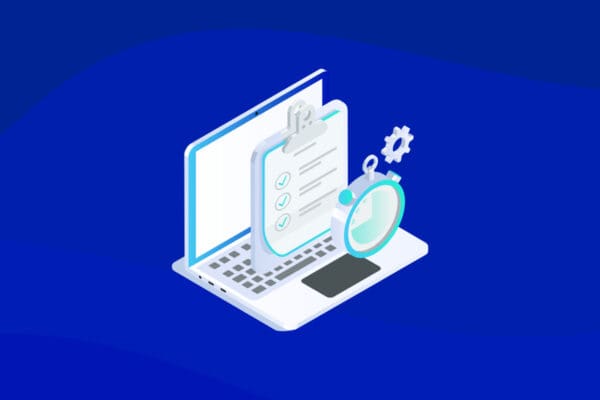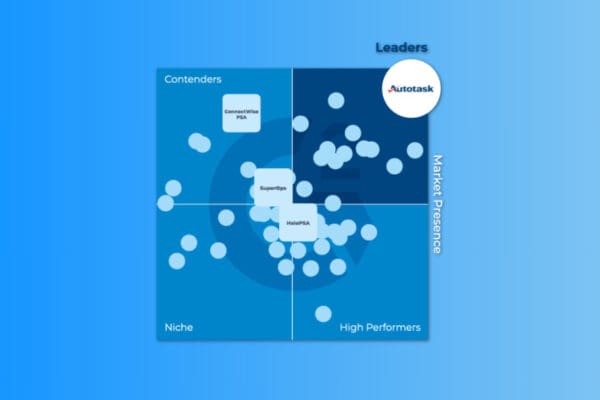What Is Platform as a Service (PaaS)?
Did you know that the total market value of the cloud computing industry is projected to reach nearly $1 trillion in value by 2026? For anyone familiar with cloud computing, this shouldn’t come as a surprise — it comes with plenty of utility for businesses. This is particularly true when it comes to using a platform as a service (PaaS).
However, not everyone understands everything that they should about it. Let’s explore the key details you need to know.
What is Platform as a Service (PaaS)?
Platform as a Service (PaaS) is a type of cloud computing that delivers a platform and environment to allow developers to build applications and services over the Internet.
PaaS can provide a complete development stack. This includes everything from the operating system (OS) to database management systems (DBMS). It also includes middleware and application development frameworks. So, it has a large number of practical applications.
How does PaaS work?
A platform as a service provider hosts the hardware and software components that make up the PaaS environment.
This can be done either on-premises or off-premises. When delivered off-premises, PaaS is often referred to as cloud-based PaaS.
In either case, the provider handles tasks such as capacity planning, patching, and system administration. This allows developers to focus on building applications and services.
Benefits of PaaS
Some of the most notable benefits of using PaaS are listed below.
Reduced time to market: PaaS offerings come with a wide range of pre-built components and services that can help speed up the application development process.
Improved developer productivity: Developers no longer need to spend time configuring and managing the underlying platform infrastructure, which allows them to focus on writing code and developing applications.
Increased scalability and flexibility: PaaS solutions are designed to be scalable and flexible, making it easy to deploy applications quickly and efficiently.
Reduced costs: By using a PaaS solution, organizations can avoid the upfront cost of purchasing and maintaining their own hardware and software infrastructure.
These benefits shouldn’t be overlooked, as they can go a long way in terms of improving overall productivity.
Types of PaaS
There are a number of different types of PaaS solutions available, each with its own set of features and benefits. Choosing the right one is essential when it comes to meeting your needs.
Let’s take a look at some of the most notable.
Public PaaS
Public PaaS is offered by a third-party provider and is available to anyone who wants to use it.
This type is often the easiest and most affordable way to get started with Platform as a Service. It typically comes with a wide range of pre-built components and services, making it ideal for quickly developing and deploying applications.
The downside is that you are limited to the features and services offered by the public PaaS provider, and there is no guarantee of security or privacy.
Private PaaS
Private PaaS is offered by a single organization, such as a company or university. This type of PaaS is typically more expensive than public PaaS, but it comes with a number of benefits, including increased security and privacy, greater control over the features and services offered, and better performance.
Hybrid PaaS
Hybrid PaaS combines the features of both public and private PaaS. This type of PaaS gives you the flexibility to use both on-premises and off-premises resources, which can be helpful when you need to develop and deploy applications quickly.
It is a great option for those who need a middle ground between the above two choices.
Communications Paas (CPaas)
Communications Platform as a Service (CPaaS) enables developers to add real-time communication features, such as voice and video calling, text messaging, and file sharing to their applications.
CPaaS can be more expensive than other types of PaaS, and it can be more difficult to find a provider that offers the features and services you need.
Mobile Paas (mPaaS)
Mobile Platform as a Service (mPaaS) is designed to help developers quickly develop, deploy, and manage mobile applications.
mPaaS solutions typically come with a wide range of features and services, such as push notifications, user management, and analytics. However, it can be more expensive than other types of PaaS, and it can be more difficult to find a provider that offers the features and services you need.
Open PaaS
Open PaaS is a type of PaaS that is based on an open-source platform. This type of PaaS is typically more affordable than other types of PaaS, and it comes with a number of benefits, including greater flexibility and control over the features and services offered.
The main drawback here is that you are limited to the features and services offered by the open PaaS provider, and there is no guarantee of security or privacy.
Integration Platform as a Service (iPaaS)
Integration Platform as a Service (iPaaS) enables organizations to quickly and easily integrate their applications with other applications and data sources.
iPaaS solutions have features like process automation, data integration, and application programming interfaces (APIs). These solutions are also commonly seen at businesses within virtually every industry.
Database as a Service (DBaaS)
Database as a Service (DBaaS) is a type of PaaS that enables organizations to quickly and easily provision and manage databases in the cloud. DBaaS solutions include database administration, data backup, recovery, and scalability.
DBaaS can be more expensive than other types of PaaS. They can also sometimes be difficult to find a provider for.
Middleware as a Service (MWaaS)
Middleware as a Service (MWaaS) is something businesses use to help deploy middleware in a cloud environment. Messaging, queuing, and caching are some of the most commonly seen features. As such, it has great general usage capabilities.
Platform as a Service Examples
The following are some of the most popular PaaS solutions.
Microsoft Azure, Google Cloud Platform, Amazon Web Services (AWS), and IBM Bluemix are all examples of public PaaS providers. Heroku, Force.com, Google App Engine, Apache Stratos, OpenShift are also notable mentions.
When integrated correctly, they can help you scale your business sooner than anticipated.
What’s the difference between PaaS, IaaS, and SaaS?
PaaS, IaaS, and SaaS are all types of cloud computing services, but they differ in terms of what is offered.
PaaS (Platform as a Service) is a type of cloud computing service that enables organizations to develop and deploy applications quickly and easily.
IaaS (Infrastructure as a Service) enables organizations to provision and manage infrastructure in the cloud.
SaaS (Software as a Service) is a type of cloud computing service that enables organizations to use software applications in the cloud.
The main difference between them is that PaaS enables organizations to develop and deploy applications quickly and easily. IaaS enables organizations to provision and manage infrastructure in the cloud. SaaS enables organizations to use software applications in the cloud.
Best practices for evaluating and buying PaaS
When evaluating and buying PaaS, there are a number of things to consider. These can include:
- What type of PaaS do you need?
- What features and services does the PaaS offer?
- What is the provider’s reputation?
- What is the provider’s track record for security and privacy?
- What is the provider’s track record for reliability and availability?
The correct answer will be contingent upon your goals. However, the above questions can help you narrow down your potential options.
How can you ensure PaaS security as a managed service provider?
Security is always a concern when working with cloud-based services, and PaaS is no different.
In order to ensure PaaS security as a managed service provider, you should consider the following:
- What type of data will you store in the PaaS?
- What are the compliance requirements for the data?
- What are the security requirements for the data?
- What type of access control is needed?
- What is the provider’s reputation for security and privacy?
PaaS providers should also have a robust disaster recovery plan in place in case of an emergency.
Multilayer security approach
Although it can seem difficult to understand at first, PaaS has plenty of utility to help you run your company more efficiently. By keeping the above information about PaaS in cloud computing in mind, you’ll be able to make the decision that is best for you in the future.
Protecting Microsoft Azure
Datto Backup for Microsoft Azure is an enterprise-grade business continuity solution that helps protect and recover Microsoft Azure workloads. It offers hourly replication to the secure and private Datto cloud that minimises single-cloud risk and ensures instant recovery during downtime, cyber attacks and outages.
It is purpose built for MSPs offering single pane of glass management, easy deployment and day-to-day management, all delivered for a flat monthly fee.




